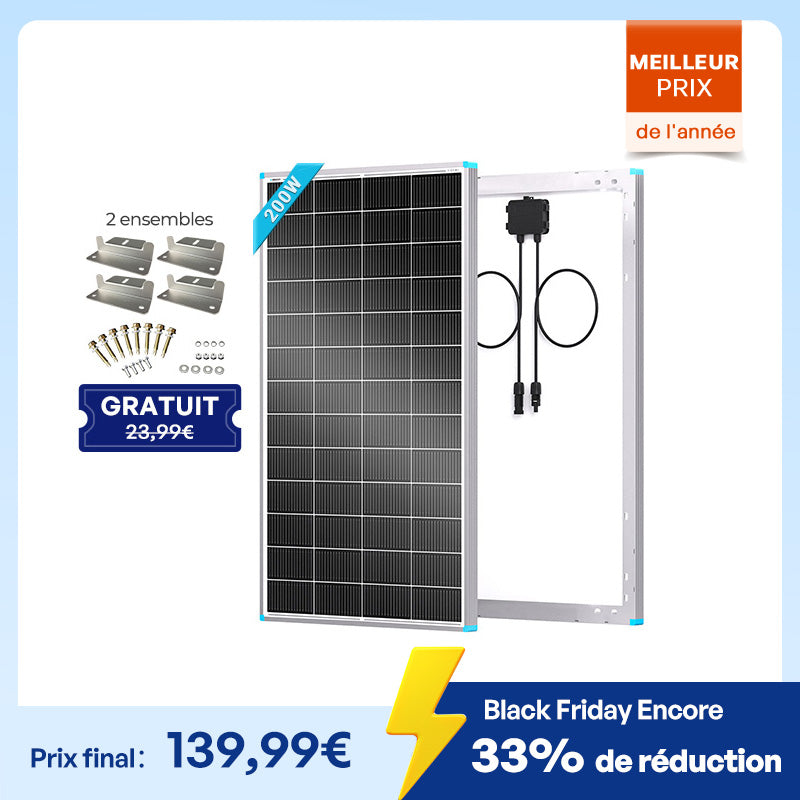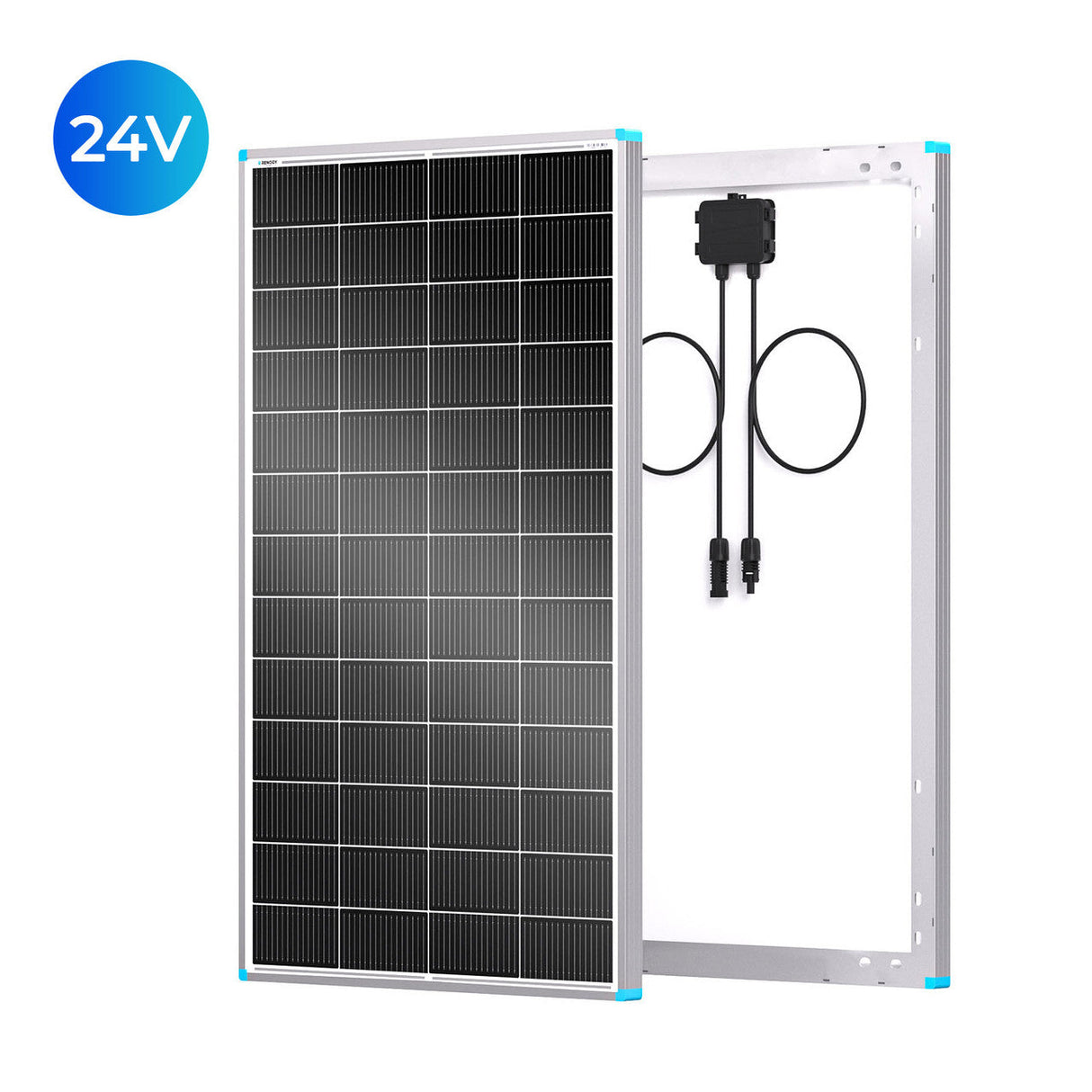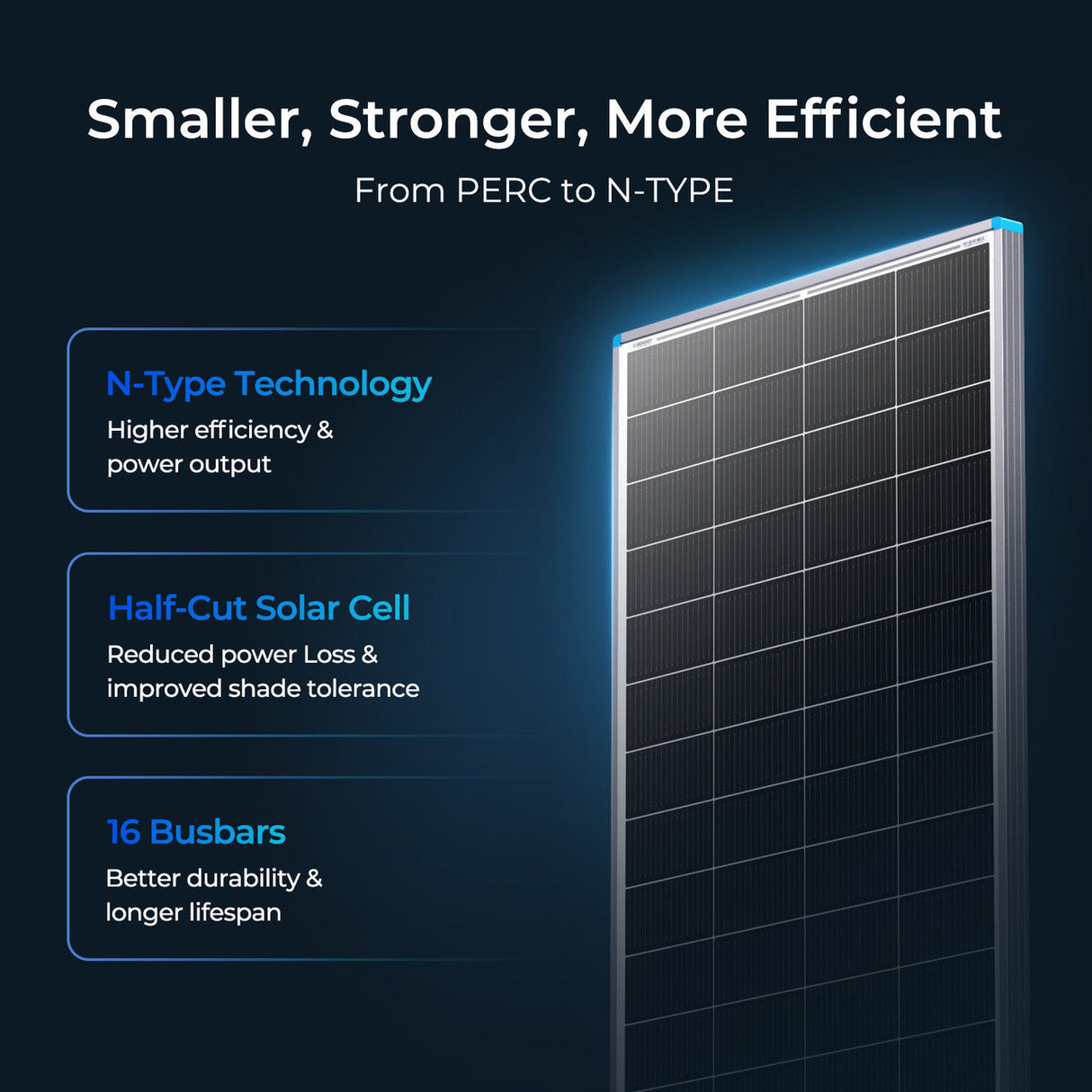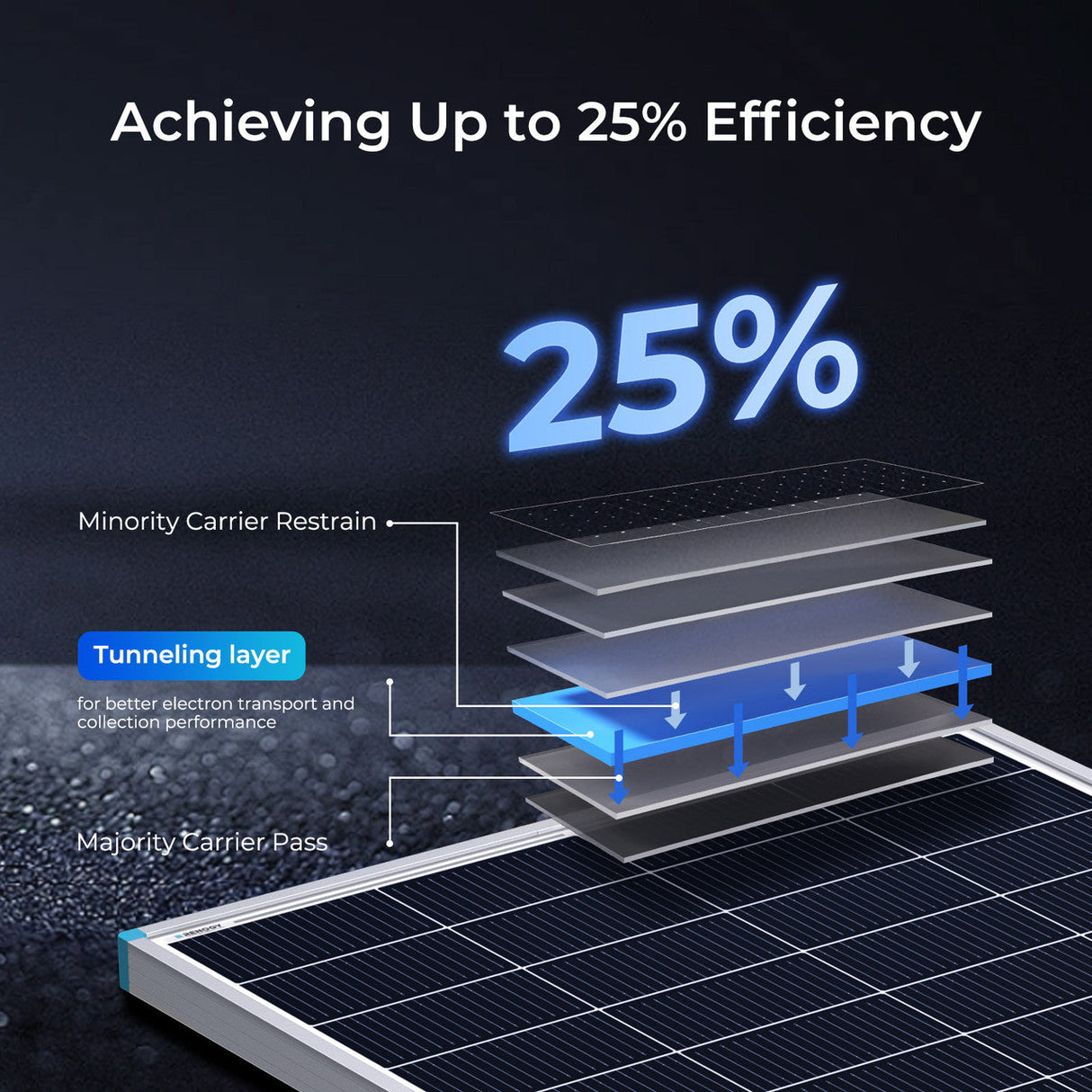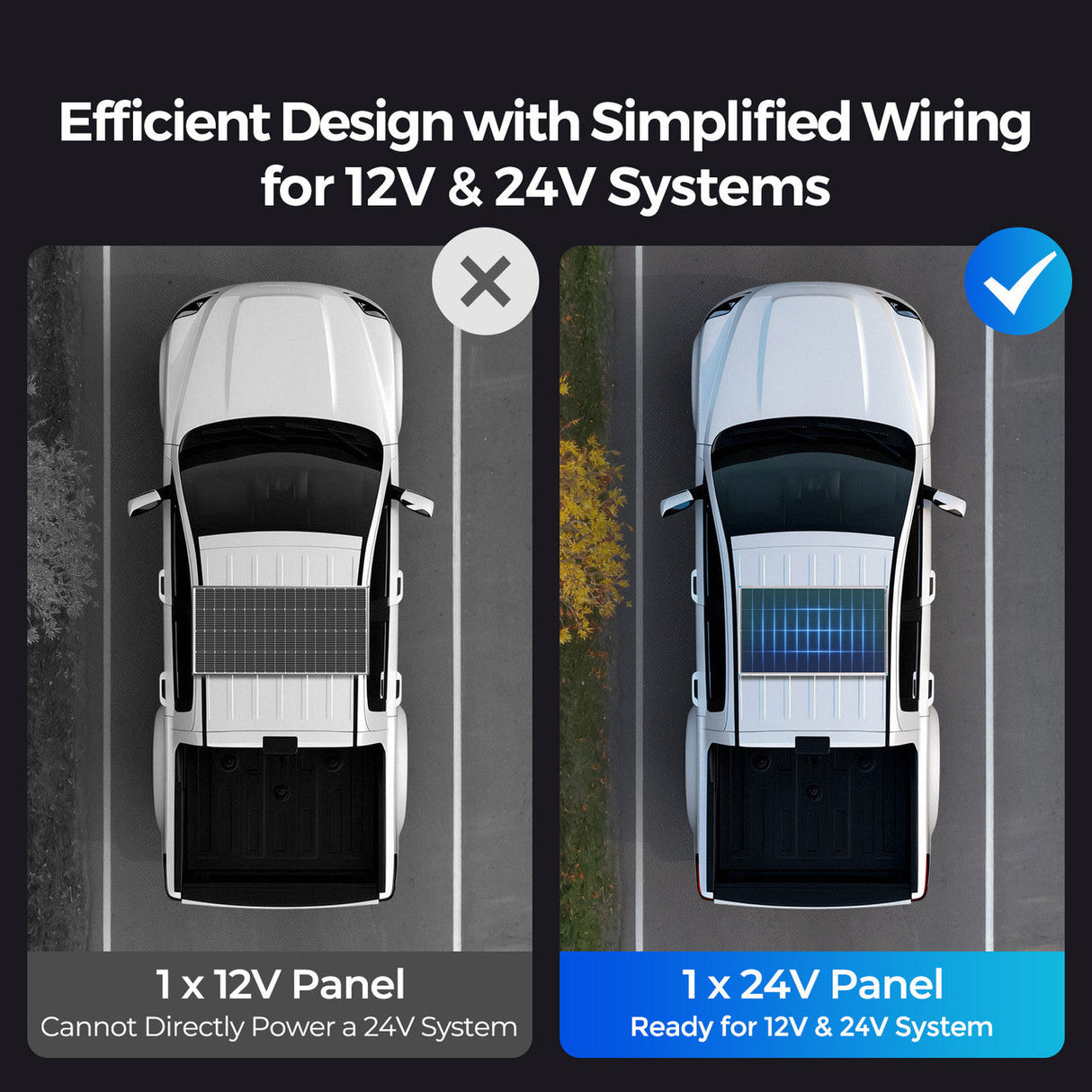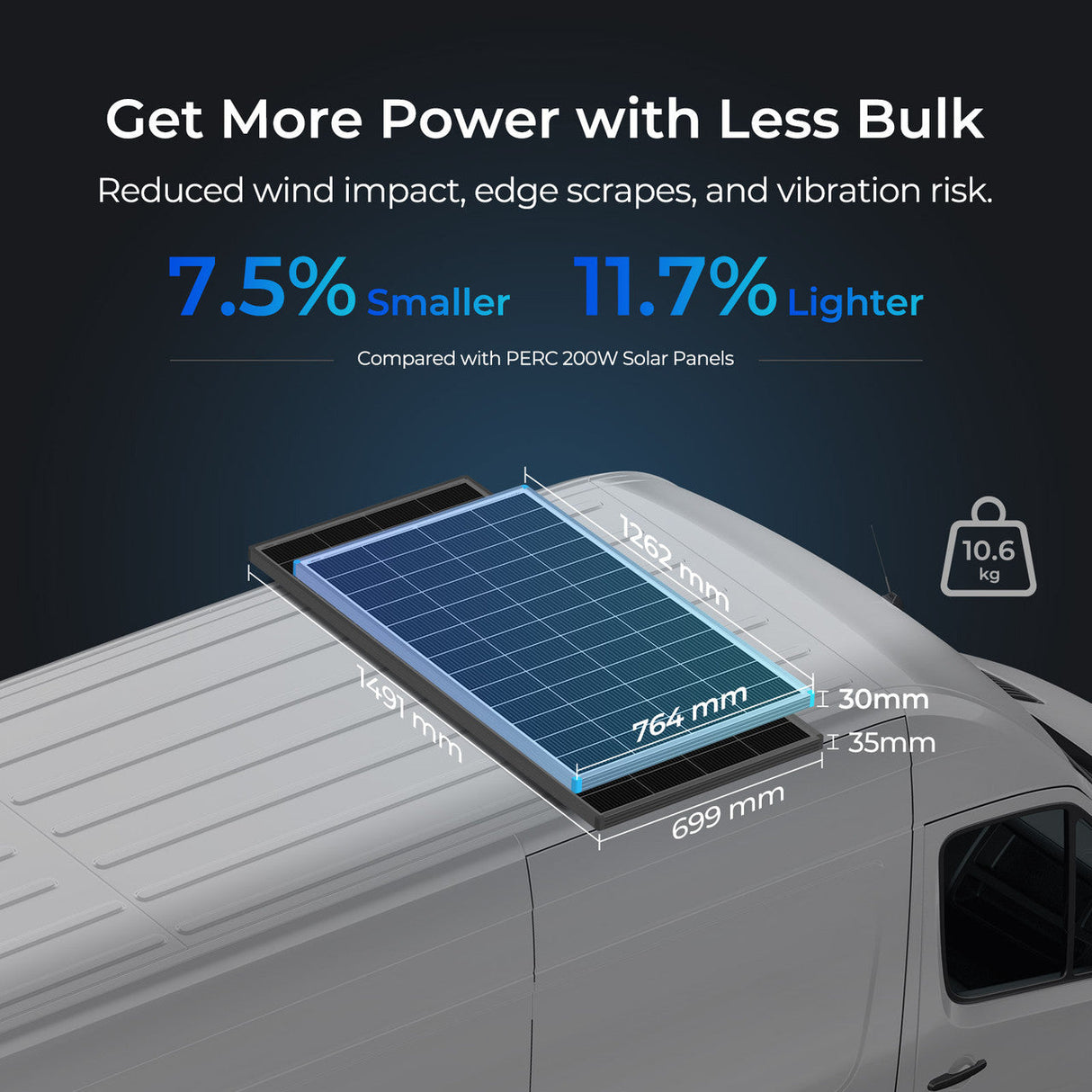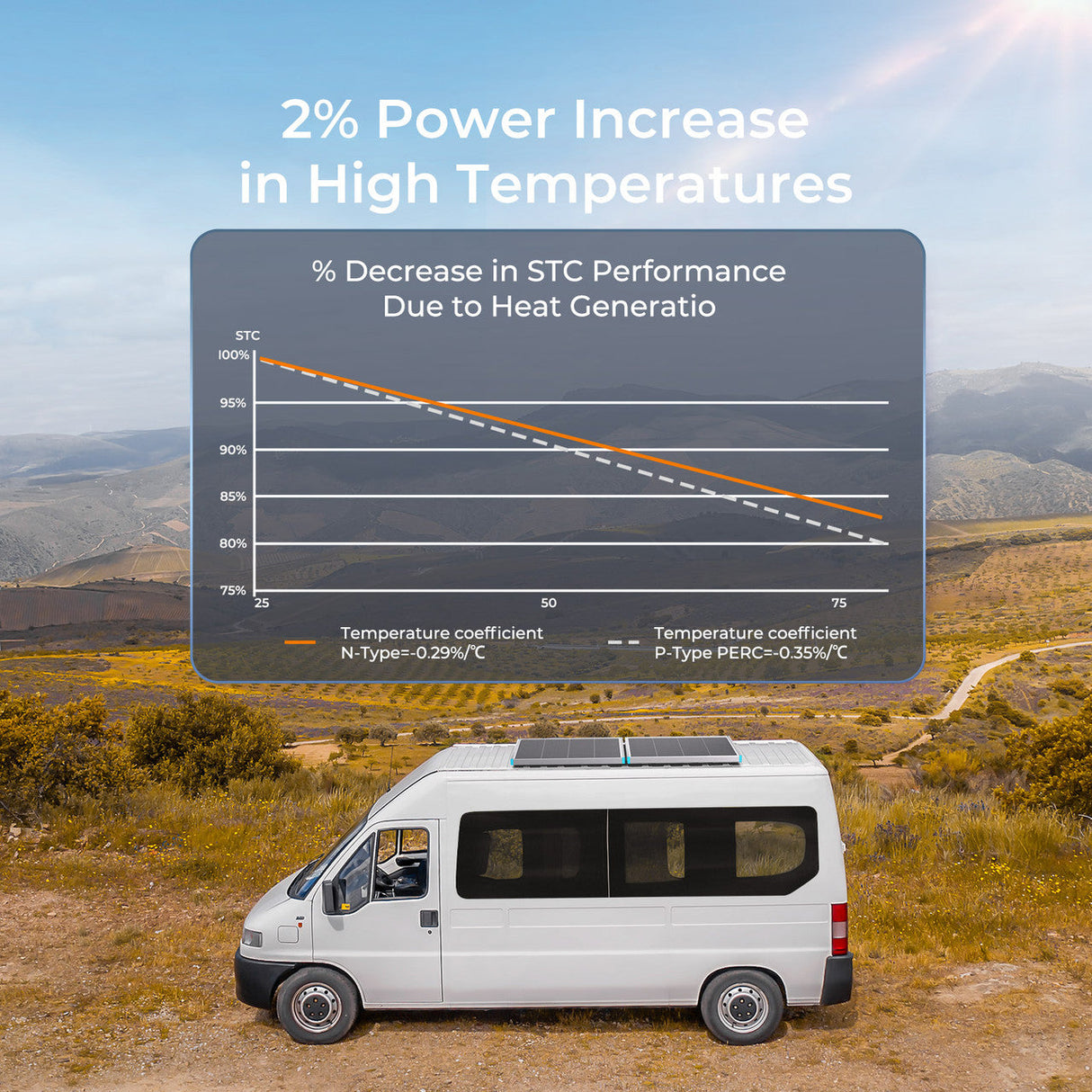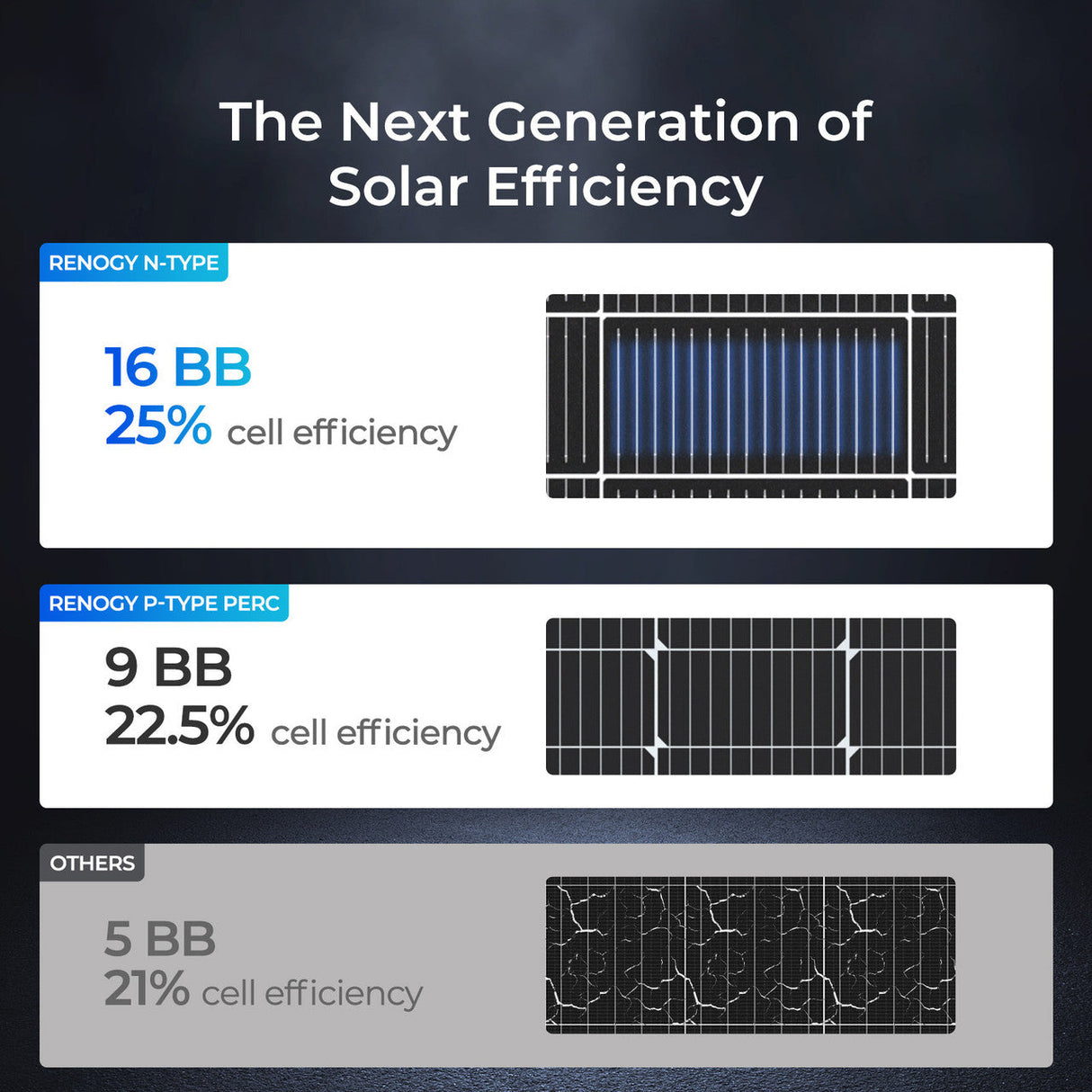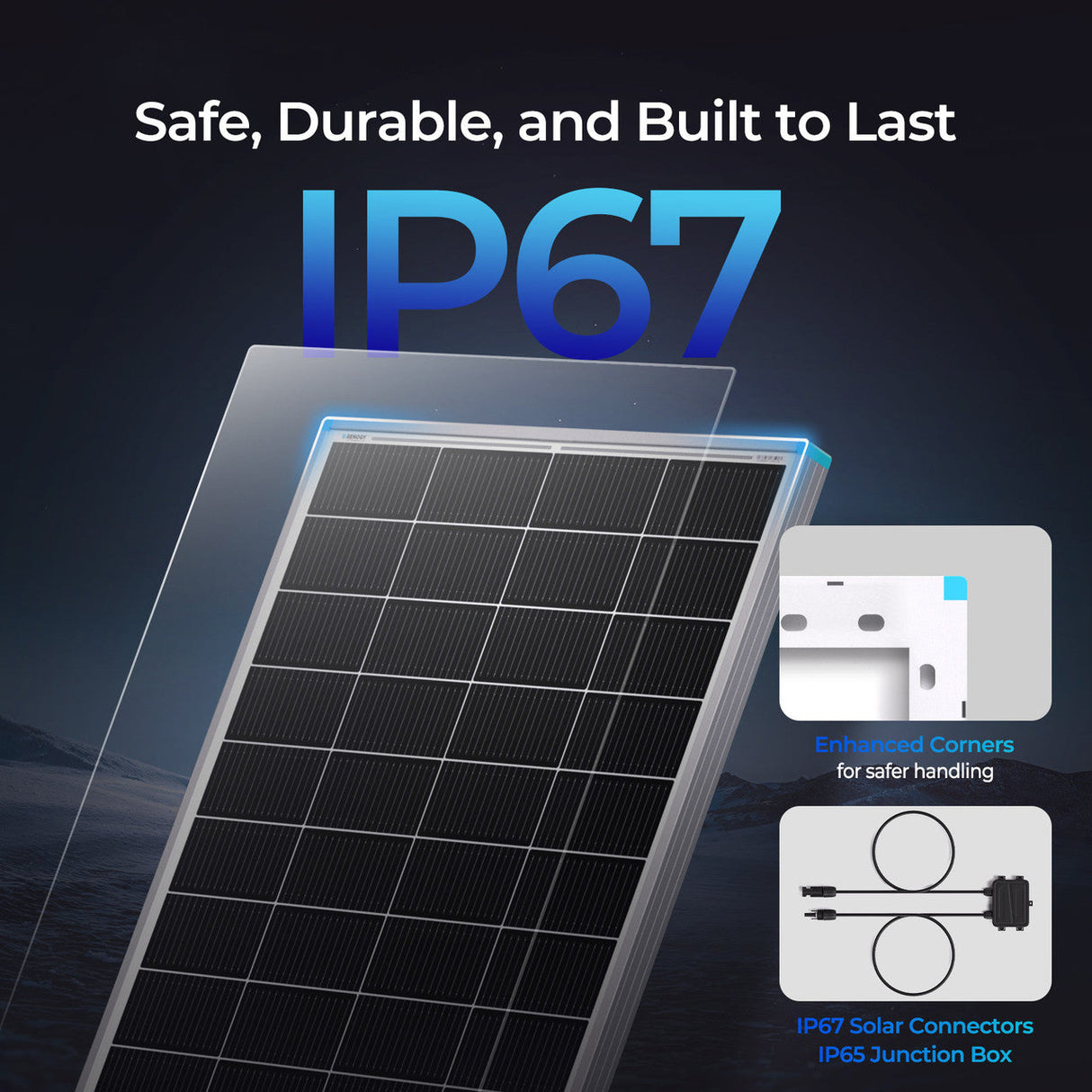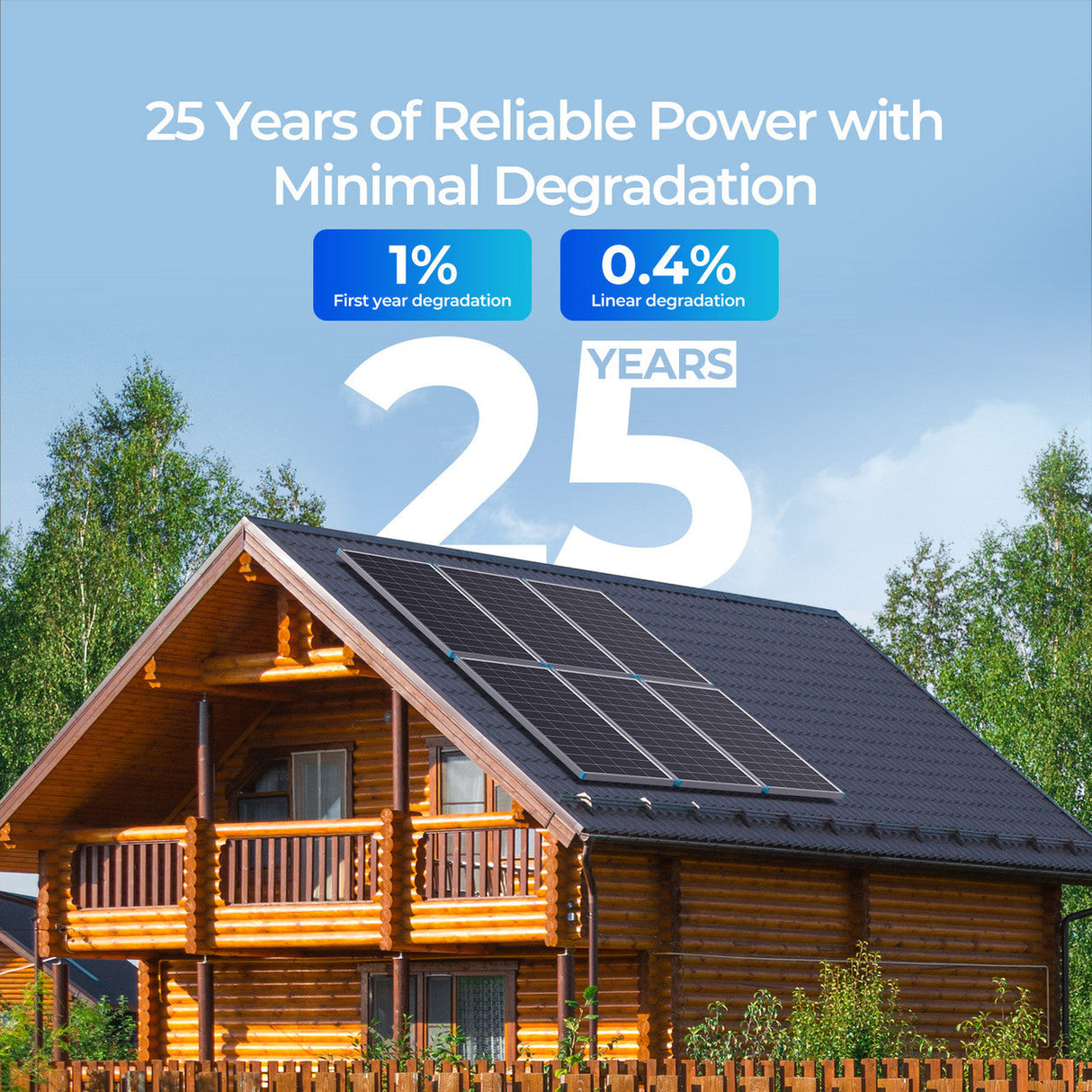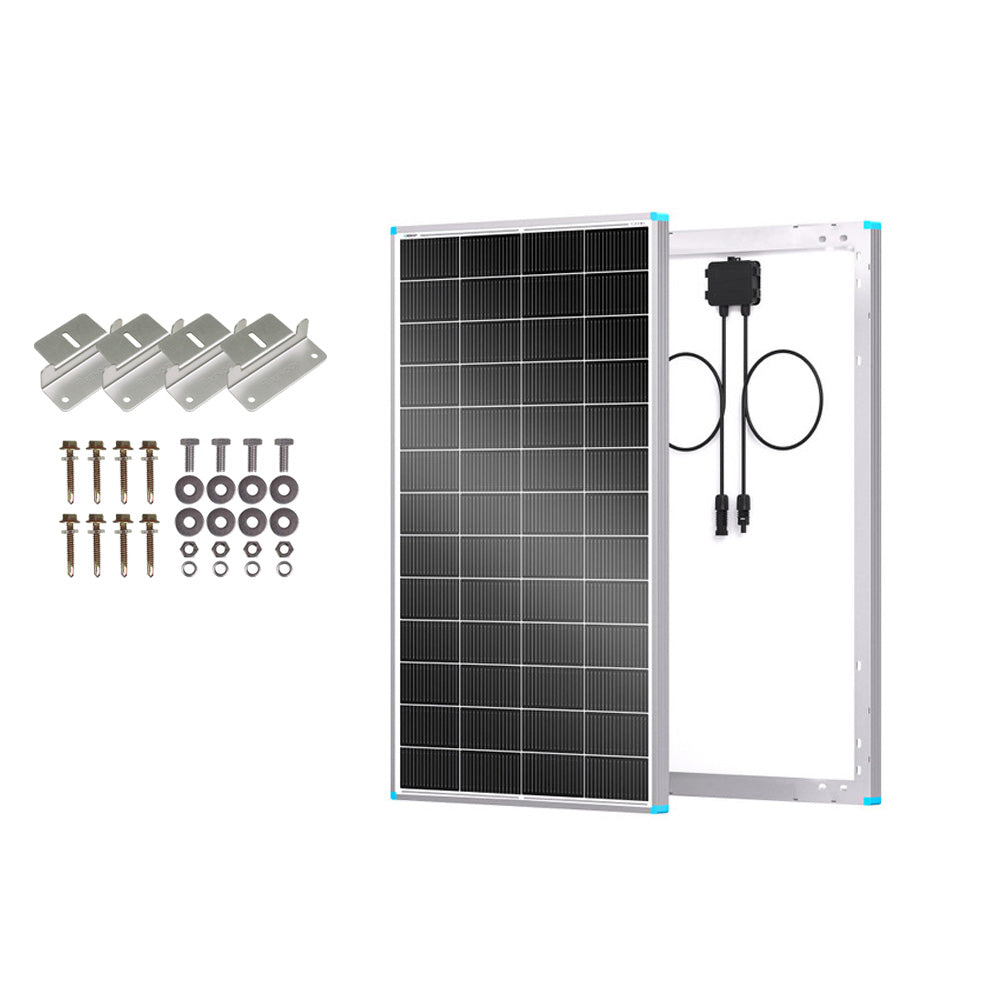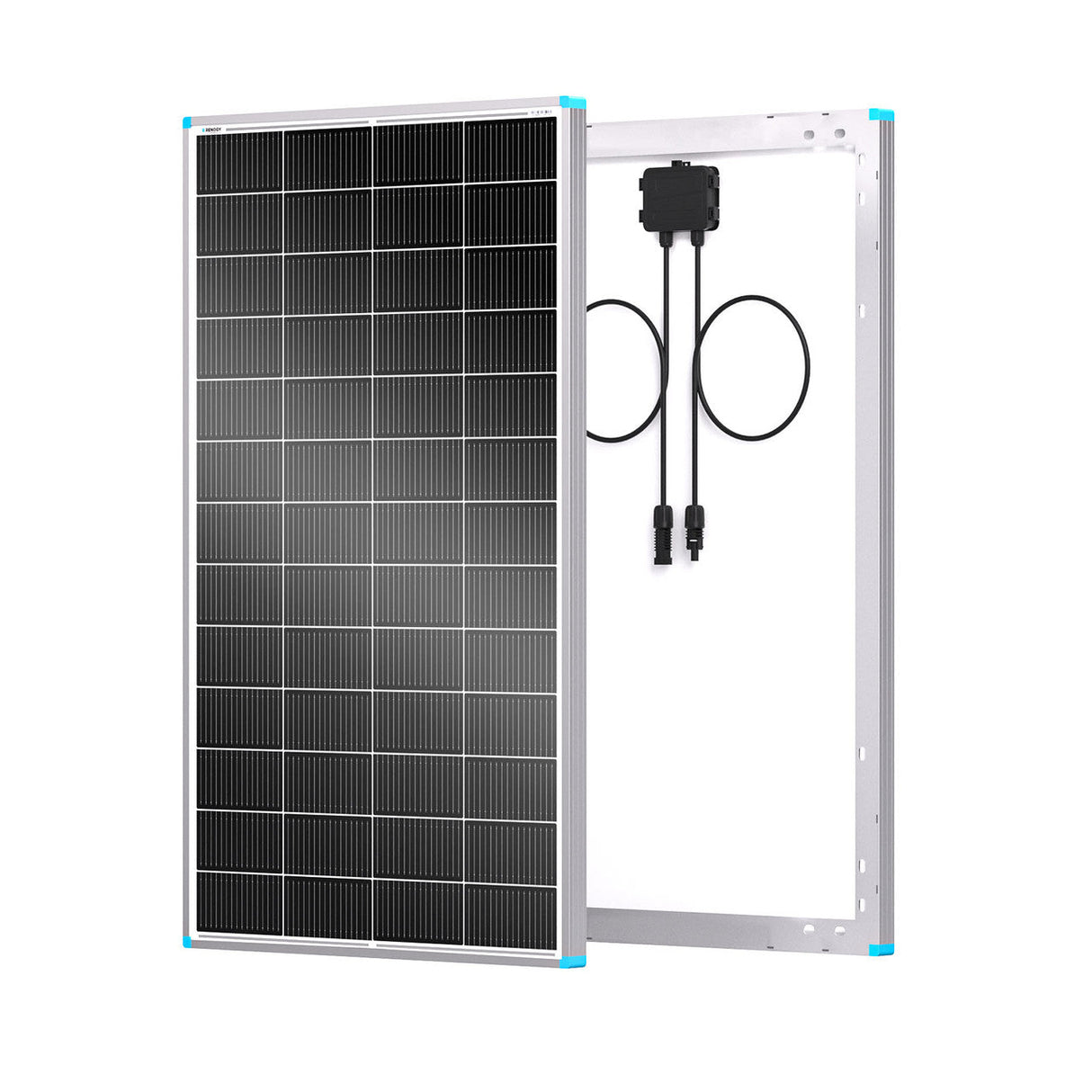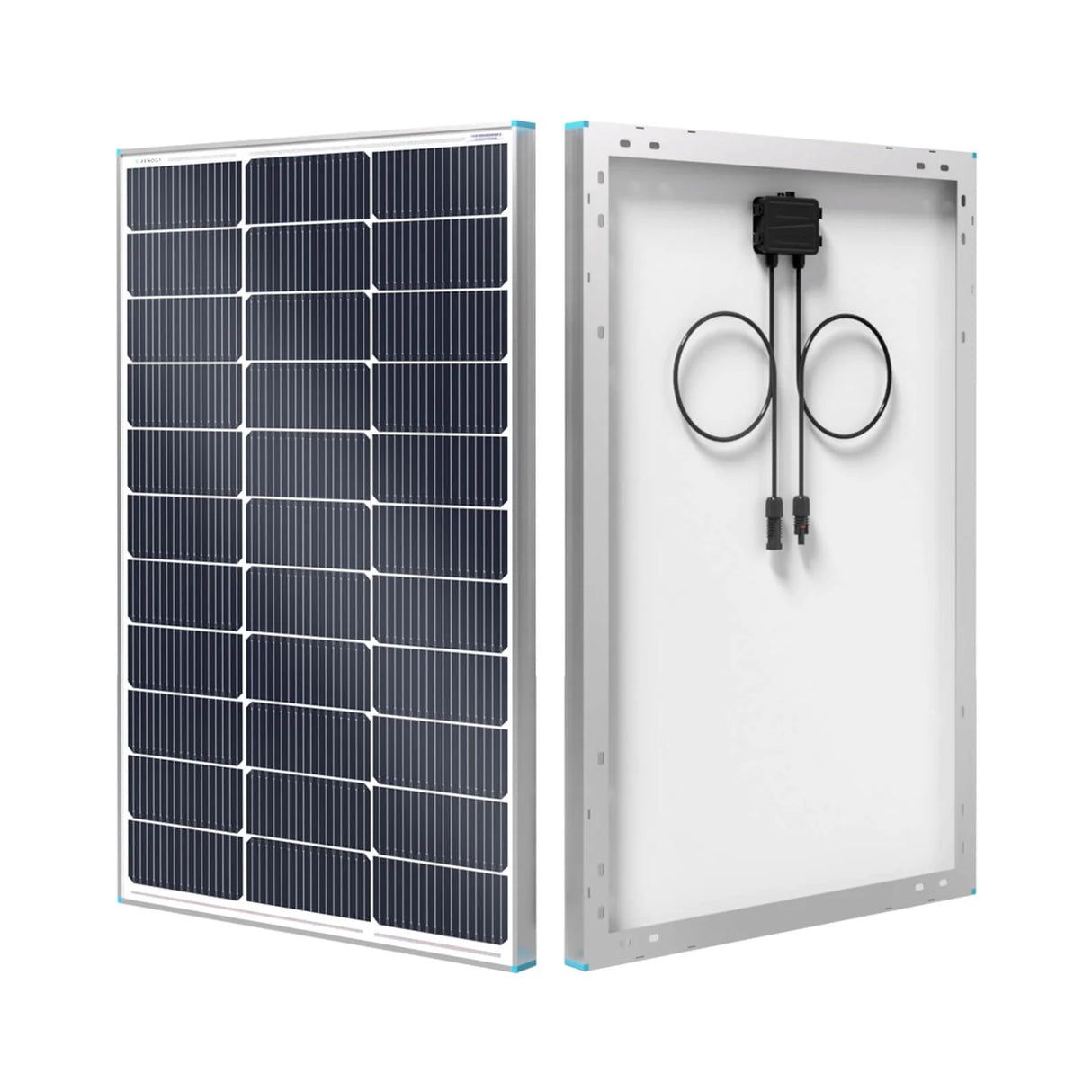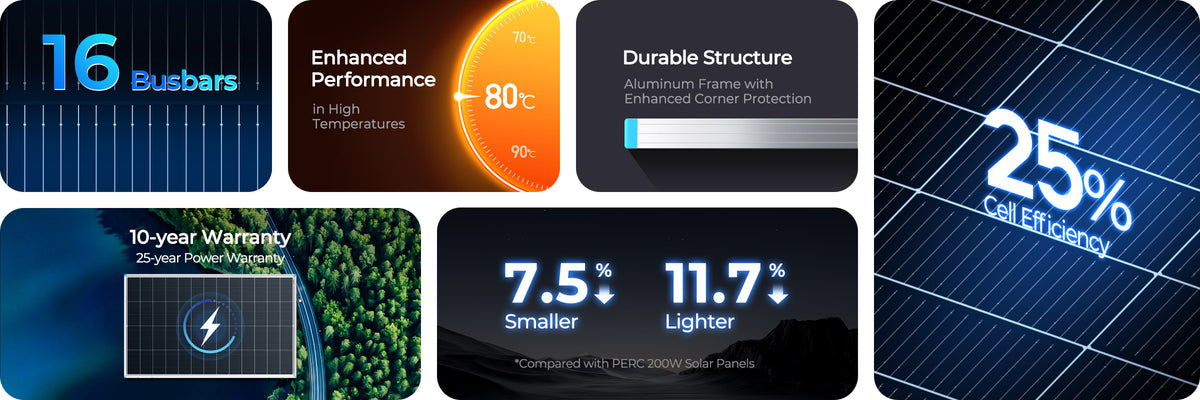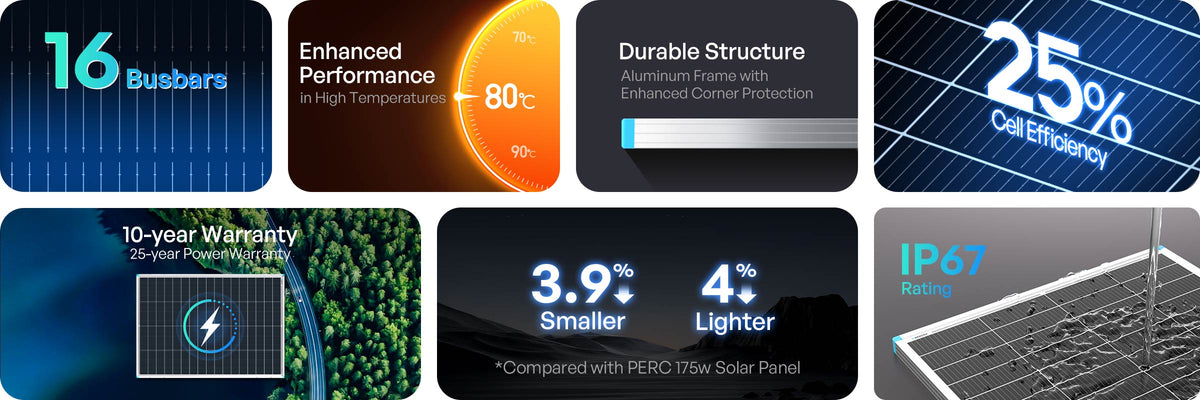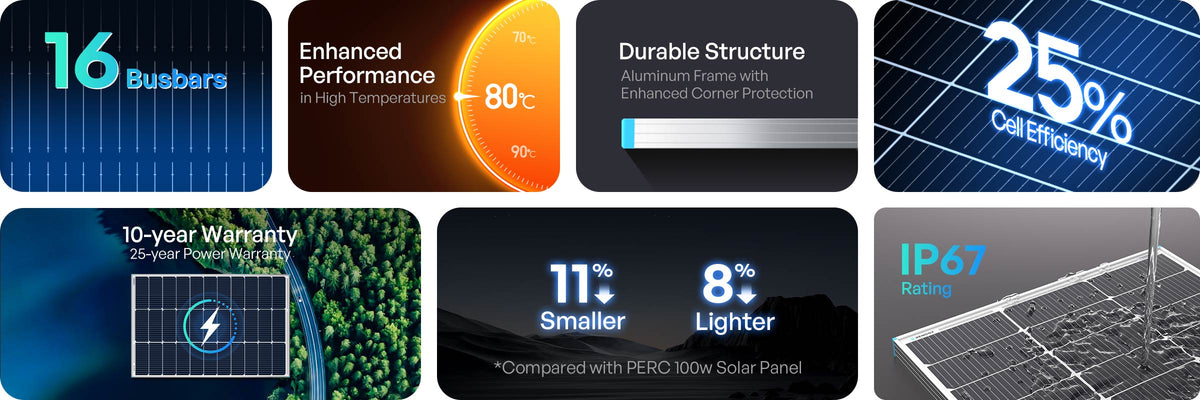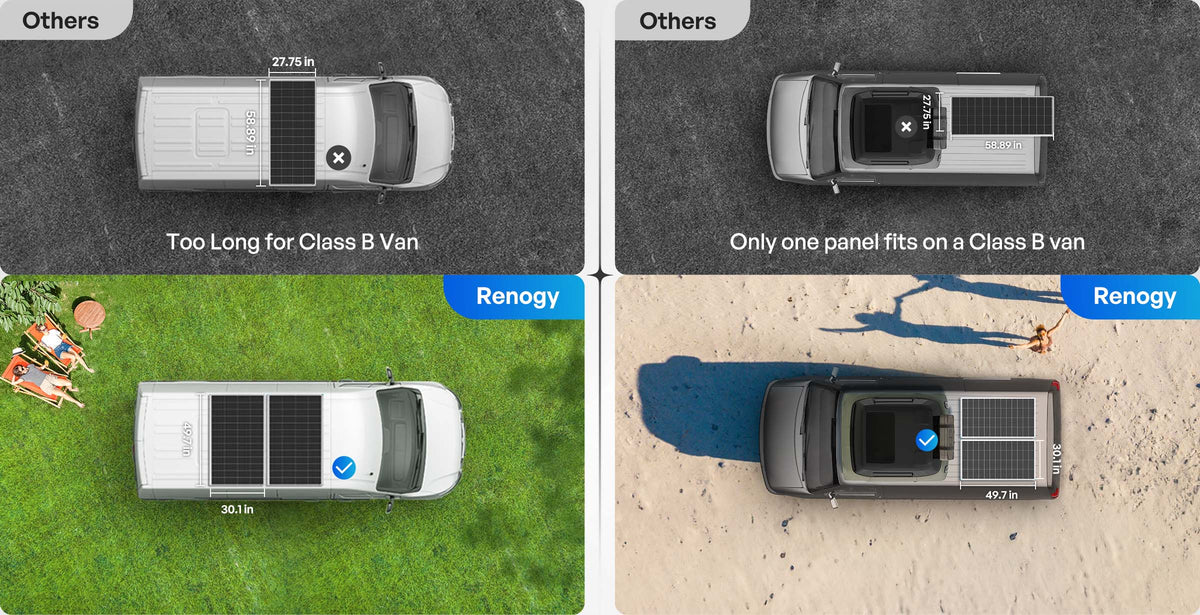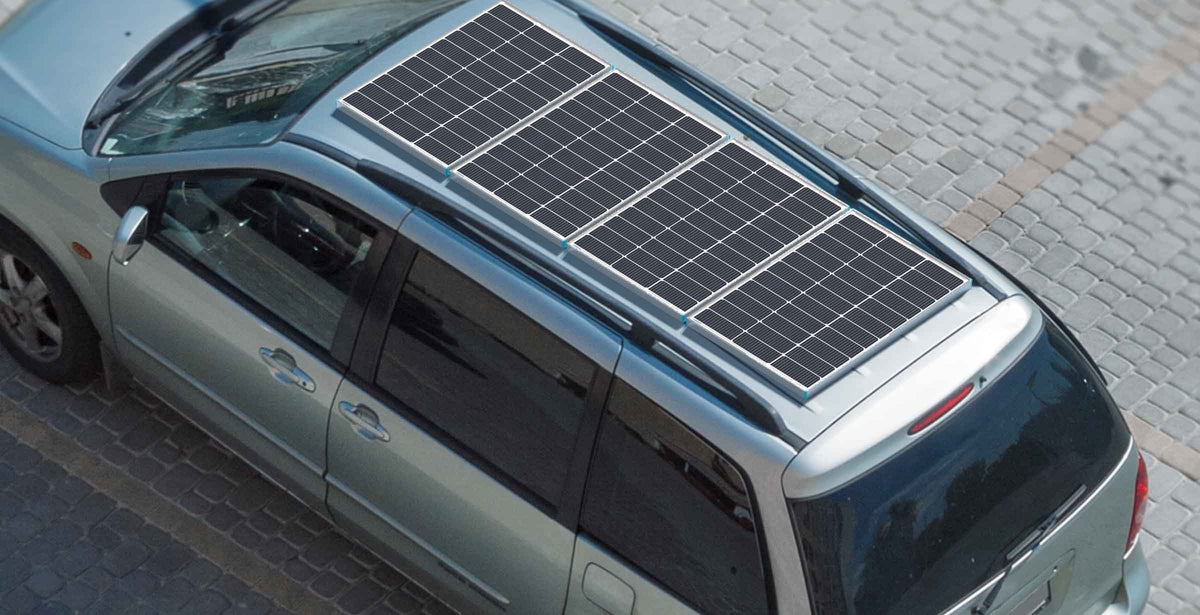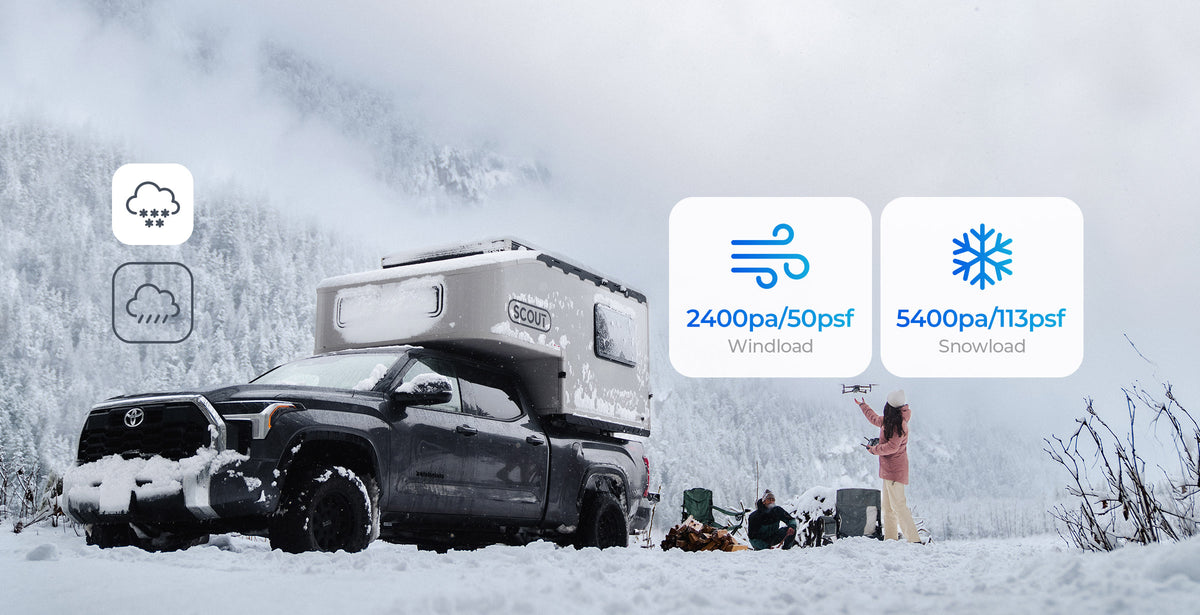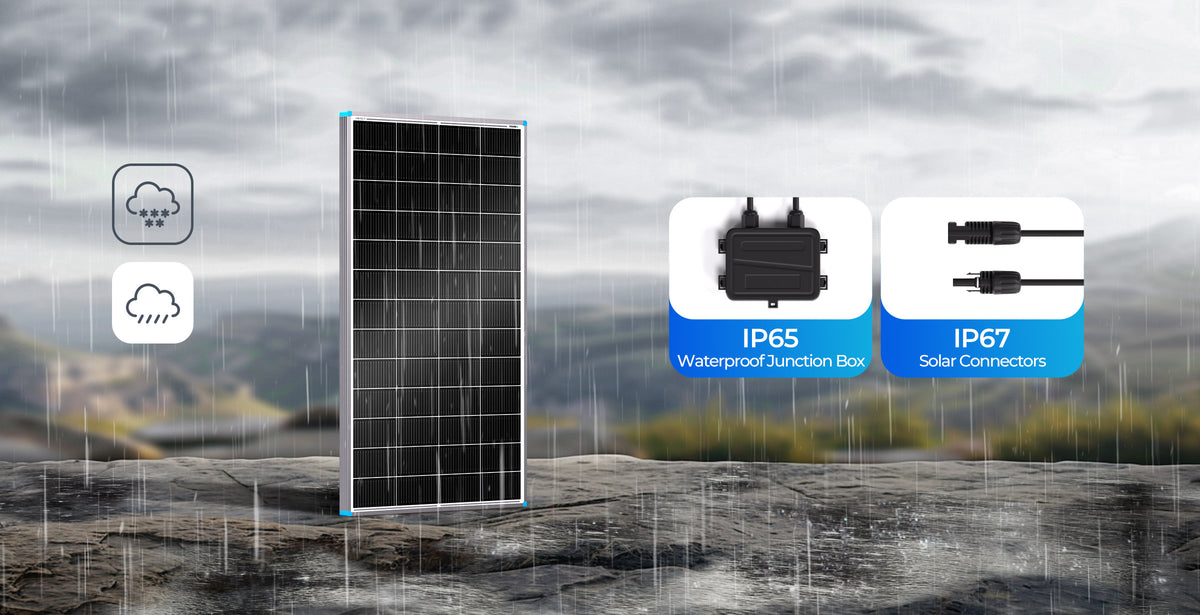Renogy Solar Panel 24V 200W/100W N-Type 16BB – High Efficiency and Durability
- Compatible avec les systèmes 12V et 24V pour une grande flexibilité d’utilisation.
- Idéal pour les vans de type Classe B : 7,5 % plus compact et 11,7 % plus léger que les panneaux standards.
- Cellules N-Type haute performance avec un rendement de 25 %, garantissant une production d’énergie supérieure et une meilleure durabilité.
- Faibles pertes de rendement à basse température et excellente résistance à la chaleur, parfait pour les climats chauds
- Dégradation de puissance très faible : ≤ 1 % la première année et maintien de 80 % de la capacité après 25 ans.
Renogy Solar Panel 24V 200W/100W N-Type 16BB – High Efficiency and Durability - 200W (1 Pack avec support Z gratuit) is backordered and will ship as soon as it is back in stock.
Subtitle
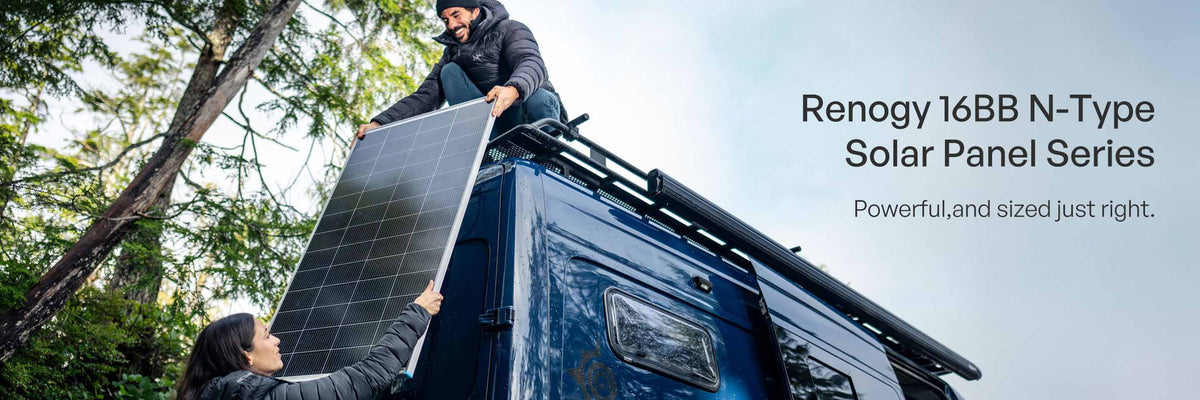
The future is N-Type: embrace this technology for better performance and durability.
Subtitle
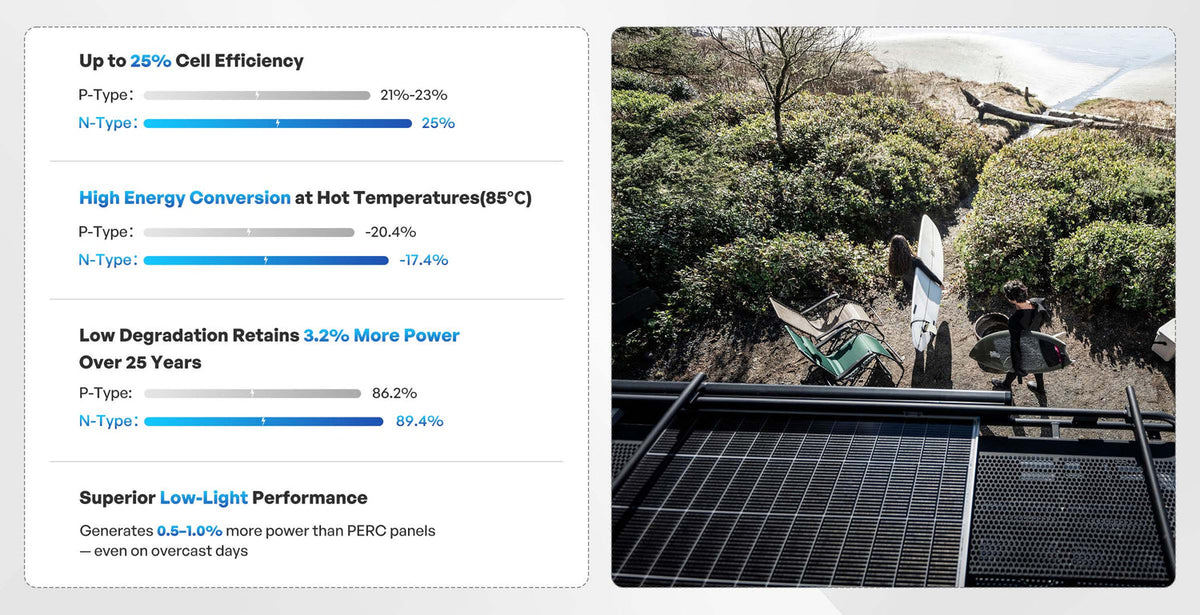
Built to last, wherever you are
EVA film and N-Type cells ensure a panel that will withstand years of travel and heavy use.
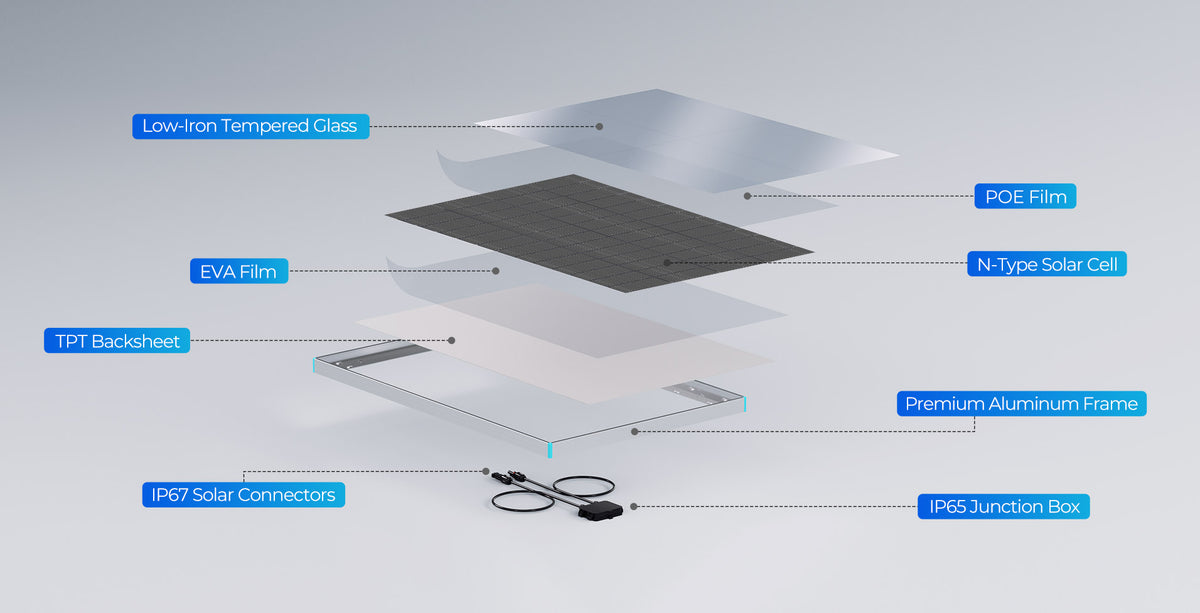
Rugged for the toughest roads
Reinforced aluminum frame capable of withstanding shocks, vibrations and harsh road conditions.
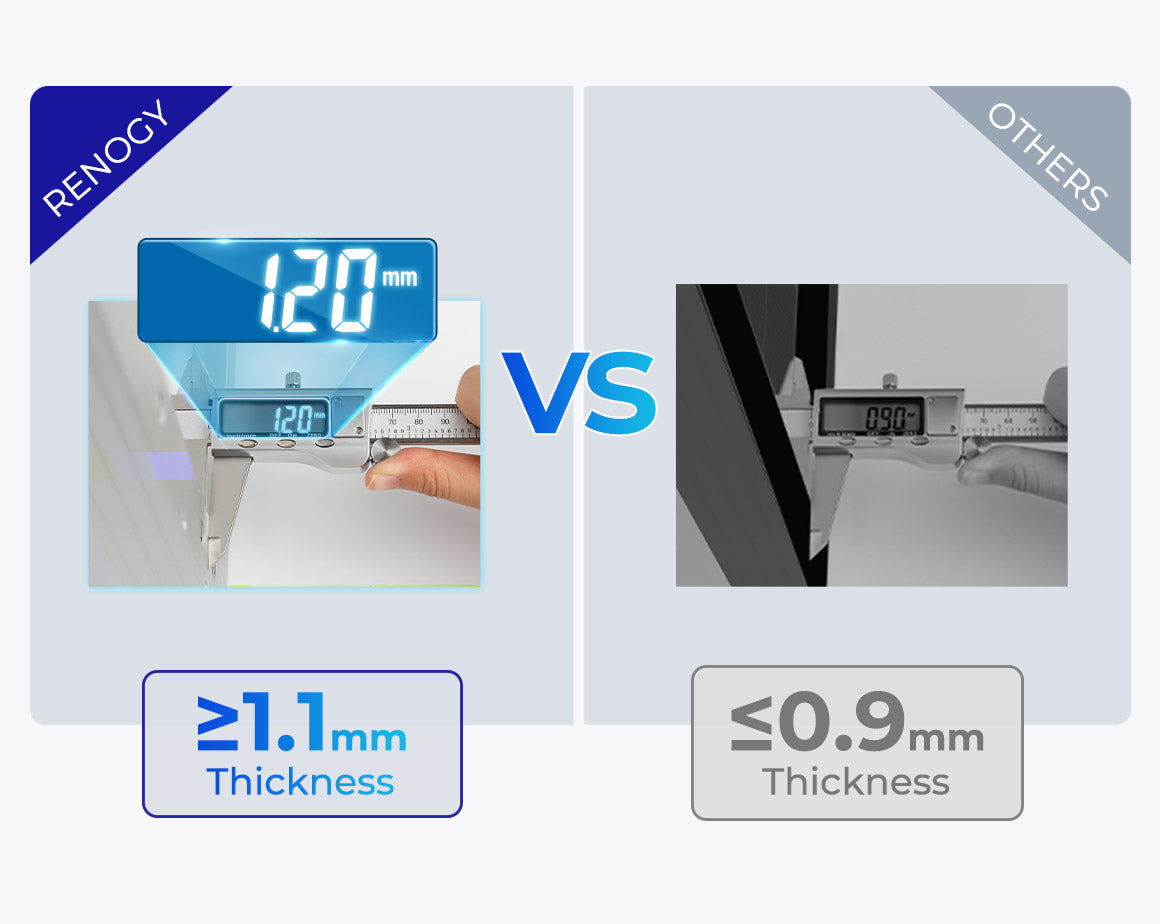
Quick installation and easy transport
Durable frame with reinforced PA66 GB30 corners for secure handling and easy assembly.
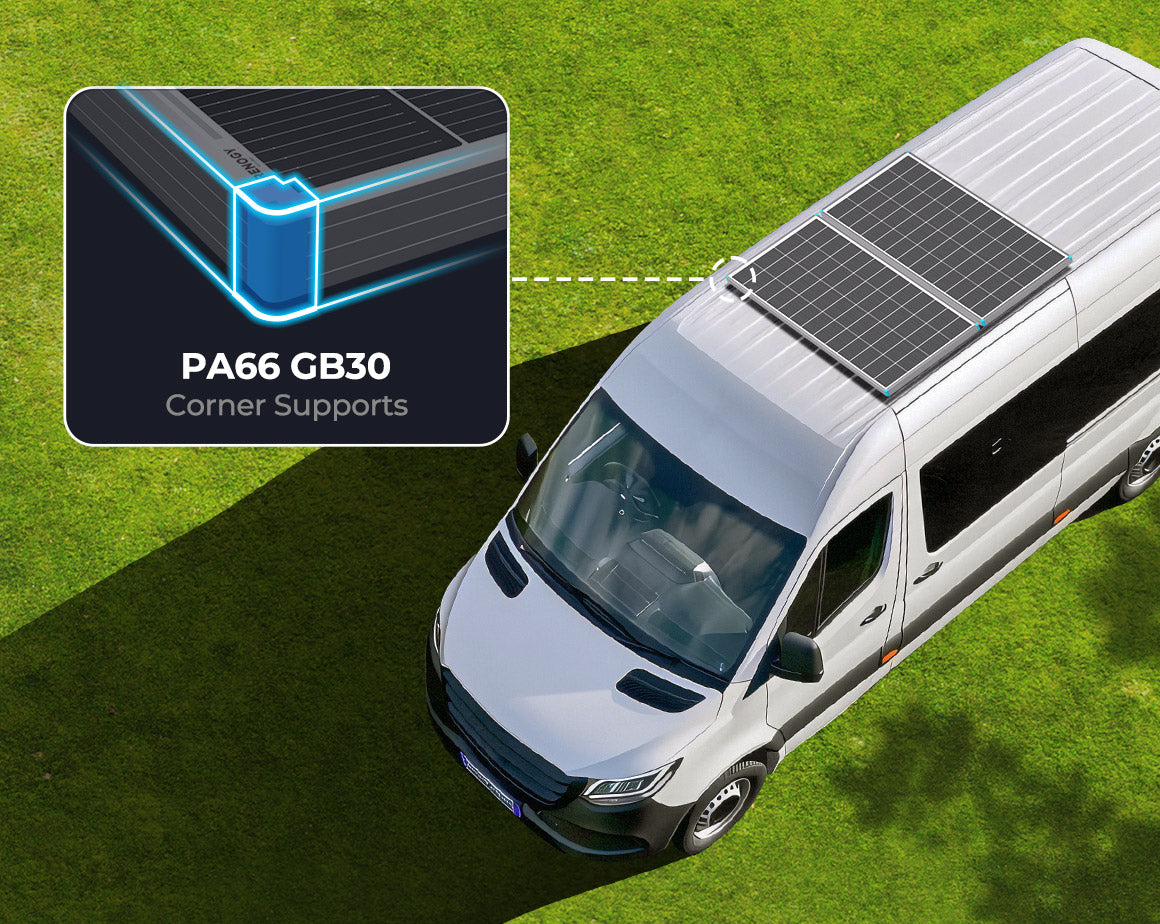
Package Contents
-
Renogy 16BB N-Type 24V Solar Panel
x 1
200W Spécifications
100W Spécifications
175W Spécifications
Téléchargements
Frequently Asked Questions
What does it take to complete a stand-alone solar system?
What does it take to complete a stand-alone solar system?
A solar panel must be connected to a charge controller to control the current, as well as to a battery to store the electrical energy. You will need adapter cables to connect the solar panel(s) to the controller, and cables to connect the controller to a deep-cycle battery.
What do “off-grid” and “on-grid” mean?
What do “off-grid” and “on-grid” mean?
A grid-tied system means your solar installation is connected to the public electricity grid. An off-grid system operates independently of the grid, storing the energy produced for later use. Off-grid systems are not affected by grid power outages.
Why is my solar panel producing less energy than expected?
Why is my solar panel producing less energy than expected?
Several environmental factors can reduce the performance of your panel: indirect light, strong heat, cloudy skies, dirt or dust accumulated on the panel surface.
How do I connect my solar panels in my electrical circuit (series or parallel)?
How do I connect my solar panels in my electrical circuit (series or parallel)?
In series: the voltages of the panels add up, while the current remains that of a single panel.
In parallel: the currents add up, while the voltage remains that of a single panel.
To optimize power and respect the limits of your system, you can combine the two types of connections according to your needs.
How many solar panels should I install?
How many solar panels should I install?
To determine the number of panels required, start by estimating your electricity consumption in Watts and Watt-hours (W × hours of use × safety factor 1.5 to 2). First, size your battery according to this capacity, then calculate the number of panels required to supply this energy.
What does “24V” mean in the product title and why does this value differ from the panel voltage?
What does “24V” mean in the product title and why does this value differ from the panel voltage?
The mention "24V" in a title like "Solar Panel xxx Watts 24 Volts" does not correspond to the actual voltage of the panel (Voc or Vmp), but indicates that this panel is suitable for a 24V system or battery. This means that it is not necessary to connect several panels in series or parallel to achieve this voltage. They are therefore two separate values with different meanings.
How do I choose a regulator suitable for my Renogy 16BB N-Type 200W 24V panel?
How do I choose a regulator suitable for my Renogy 16BB N-Type 200W 24V panel?
To choose a compatible regulator, take into account the open circuit voltage (Voc) of the panel, here 37.44 V.
For single or parallel connection, the regulator must accept a maximum PV voltage of at least 40 V.
For series connection, the maximum PV voltage of the regulator must be at least 40 V × number of panels in series.
This ensures optimal performance and compatibility with your solar installation.

